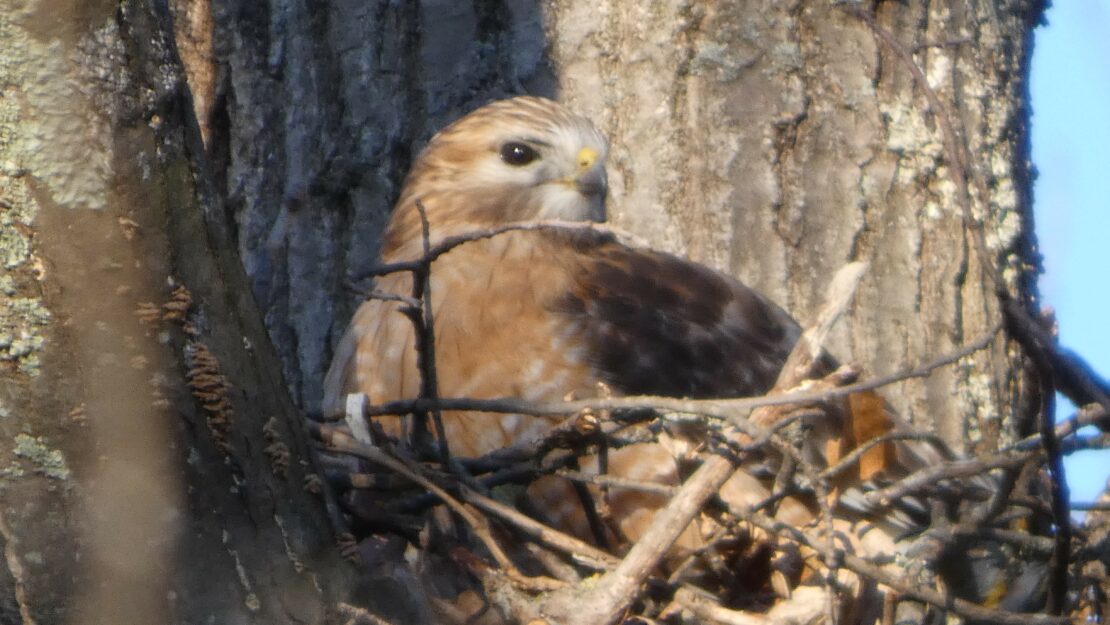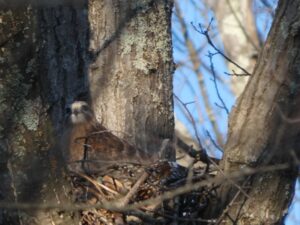Return from Spike

By Anna Landis, Shakopee Field Crew Member

The first month of project work has been a blur as my crew was one of the first to go out on spike, not for one week but three in a row, working with crews from Central and North at Mille Lacs Kathio, Father Hennepin and Charles A. Lindbergh State Parks.
Spiking for three weeks in a row brought us close as a crew, piling into the truck with all our blankets and things from our beds at home and grocery shopping as a unit, hastily dividing the domestic work of cooking and cleaning each night after working together all day.
It also afforded us the chance to get really close to our project areas and observe the parks around us, which was especially precious since at this point in the season they were practically empty.

One such moment was when we noticed a Red-Shouldered Hawk nest above us as we made breakfast. We watched the pair of hawks bring sticks to the nest and carefully construct it, and were also able to point it out to fresh eyes as a new crew joined at the same campsite the following week.
Camping within the area we were working in drove home the importance of the work we were doing to maintain the ecosystems within the park and who that benefits beyond just parkgoers. Almost every day, we would hear Sandhill Cranes coming home as we brushed our teeth outside, and would pause our work to point out Trumpeter Swans fly along the Rum River as the sun rose.
Now that we have returned from spike and as April showers rumble their way across the Twin Cities and the rest of Minnesota, celebrations and protests in honor of Earth Day also creep closer on the calendar.
Earth Day started as a series of teach-ins across college campuses, spearheaded by Wisconsin Senator Gaylord Nelson, who recruited fellow Wisconsinite and Congressman Pete McCloskey and activist Denis Hayes. The date April 22 was picked specifically because it was “a “weekday falling between Spring Break and Final Exams, to maximize the greatest student participation,” according to the EarthDay.org website.
Conceived on the heels of the anti- Vietnam War student protests and the publishing of Rachel Carson’s cornerstone environmental text Silent Spring, Earth Day has explicitly political origins.
In today’s fraught political climate, remembering the founding ideals behind Earth Day is critical. It seems that every day a new threat takes aim at the parks and wild spaces across the United States, and looming deregulation poses risks to hard-fought environmental protections.
While the future is uncertain in those regards, Minnesota lawmakers are hard at work to follow in Senator Nelson’s footsteps. Senator Tina Smith introduced a bill to the Senate floor earlier this month to permanently ban copper mining near the Boundary Waters, an issue that has become a partisan target in recent years.